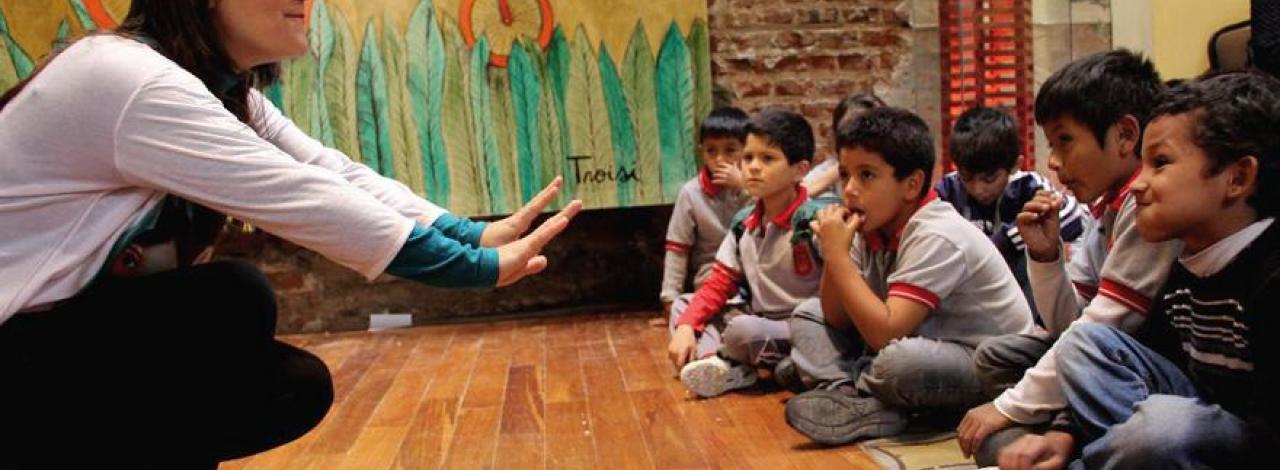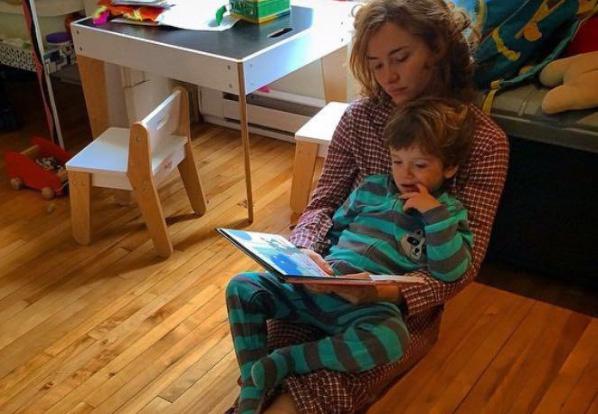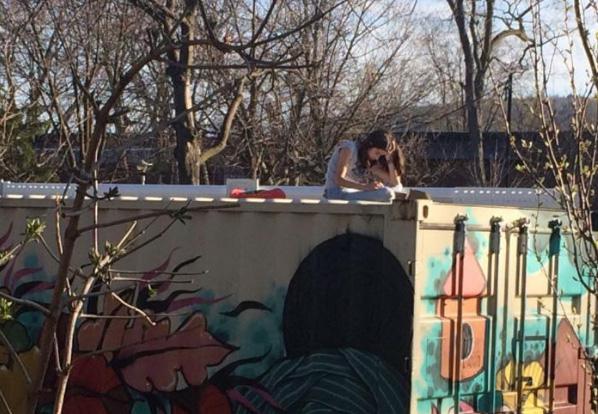
Heritage Language Program
We are the first to offer a Spanish as a Heritage Language program designed specifically for Spanish-speaking descendants.
For us, language is a heritage that affirms the Latino-Canadian identity of new generations. We are pioneers of this approach in Montreal!
The "Spanish as a Heritage Language" program is designed for children who have at least one Spanish-speaking parent. For them, this language, which they share with one or both of their parents, is a language of origin because it is not the main language of the society in which we live. The heritage language is the language spoken by immigrants in their homes and is not an official language of the host country. People who learn a heritage language are called heritage speakers.
- A high level of oral comprehension and production in informal and everyday contexts,
- A low level of oral and written comprehension and production in formal and academic contexts,
- Poor development of certain lexical areas,
- Some difficulty in adapting to context or register,
- Some grammatical deficiencies,
- Difficulty or inability to produce written texts.
Heritage speakers are a heterogeneous group. According to research in the field of heritage language education, significant differences have been identified in the teaching and learning of a language as a foreign language versus as a heritage language.
Therefore, regardless of the level of proficiency in the heritage language, heritage language speakers need to have a curriculum and courses that focus on the specific characteristics and needs of those acquiring a heritage language.
The objective of the program "Spanish Heritage Language" is to allow students to improve their communicative competence and deepen their ties with the language and culture of their origins. This program focuses on formal linguistic issues that are, in turn, inseparable from certain cultural, identity and emotional aspects, having a positive impact on the child's social integration process.
The student explores the concepts of identity, diversity and migration from three key dimensions on which Legados bases its educational proposal: Where do we live? Where do we come from? and Where are we going? As the learner progresses along this path, he/she progresses in the acquisition of the discursive levels: descriptive, narrative and argumentative. This process is accompanied by different artistic disciplines such as literature, music and visual arts, which act as tools to facilitate a meaningful and motivating learning process.
What would be the motivation for bringing your child to a heritage language class?
The heritage language is like an emotional shield or filter for the heritage language speaker and, in that sense, it plays a role in helping the speaker to :
- Maintain and strengthen intergenerational ties
- Increase self-confidence and self-esteem
- Facilitate the learning of other languages
- Strengthen their identity
- Feel pride and a sense of belonging
- Build bridges between their origins and Quebec culture.
Key dimensions
Identity
Dimensión 1
Where do we live?
We discover our local Latino community.
This dimension invites the student to learn about and strengthen ties with the local community. They explore local cultural events, while developing Spanish language and artistic skills. The thematic axis revolves around the notion of community with its values and emotional and cultural ties.
Migration
Dimensión 2
Where do we come from?
We explore and recognize the origins of Hispanic-American identity.
This dimension proposes that students explore and recognize their identity origins while developing and deepening their linguistic and artistic skills. The thematic focus revolves around the notion of linguistic identity, which often involves roots, countries of origin and intergenerational ties.
Diversity
Dimensión 3
Where are we going?
We aim to strengthen our desire to live together better, weaving our cultural diversity and promoting citizen participation.
This dimension offers students the opportunity to deepen their learning of Spanish and their capacity for critical thinking through creative projects that explore cultural diversity. The thematic axis revolves around the notion of diversity: minority groups, intercultural dialogue and citizen participation.
The courses are chosen according to age. Each level has a duration of 3 sessions: Autumn (thirteen weeks), as well as Winter and Spring (ten weeks per session). These are weekly meetings during which, at all levels, we work in pedagogical pairs: a language teacher (Spanish in use) and a specialist who is dedicated to teaching an artistic discipline. The two teachers work in constant synergy based on thematic axes that allow for a strong cohesion in teaching.
The "Heritage Language" program
| Nivel | Dimensiones | Nivel discursivo | Español en uso | Disciplina artística |
|---|---|---|---|---|
| Eje temático | ||||
| ¿Adónde vivimos? | Iniciación musical | Canto y música | ||
| Nivel | Dimensiones | Nivel discursivo | Español en uso | Disciplina artística |
|---|---|---|---|---|
| Eje temático | ||||
| 1 |
¿Adónde vivimos? ¿De dónde venimos? |
Descriptivo | "Mi mundo y yo" Este eje se aborda semanalmente a través de diferentes unidades | Canto y música |
| 2 |
¿Adónde vivimos? ¿De dónde venimos? |
Descriptivo y narrativo | "Mi comunidad y yo" Este eje se aborda semanalmente a través de diferentes unidades | Canto y música |
| Nivel | Dimensiones | Nivel discursivo | Español en uso | Disciplina artística |
|---|---|---|---|---|
| Eje temático | ||||
| 1 |
¿Adónde vivimos? ¿De dónde venimos? |
Descriptivo y narrativo | "Un viaje asombroso" Este eje se aborda semanalmente a través de diferentes unidades | Canto y música |
| 2 |
¿Adónde vivimos? ¿De dónde venimos? |
Descriptivo, narrativo y expositivo |
Temático por sesión:
|
Canto y música |
| 3 |
¿Adónde vivimos? ¿De dónde venimos? ¿Hacia donde vamos? |
Descriptivo, narrativo, expositivo y argumentativo |
Talleres lengua y cultura especializados por sesión: "Hacemos cultura con la lengua" |
|
| Nivel | Dimensiones | Nivel discursivo | Español en uso | Disciplina artística |
|---|---|---|---|---|
| Eje temático | ||||
| 1 |
¿Adónde vivimos? ¿De dónde venimos? ¿Hacia donde vamos? |
Descriptivo, narrativo, expositivo y argumentativo |
Talleres lengua y cultura especializados por sesión:
|
Me voy de intercambio (Progama Legados Internacional) |

















